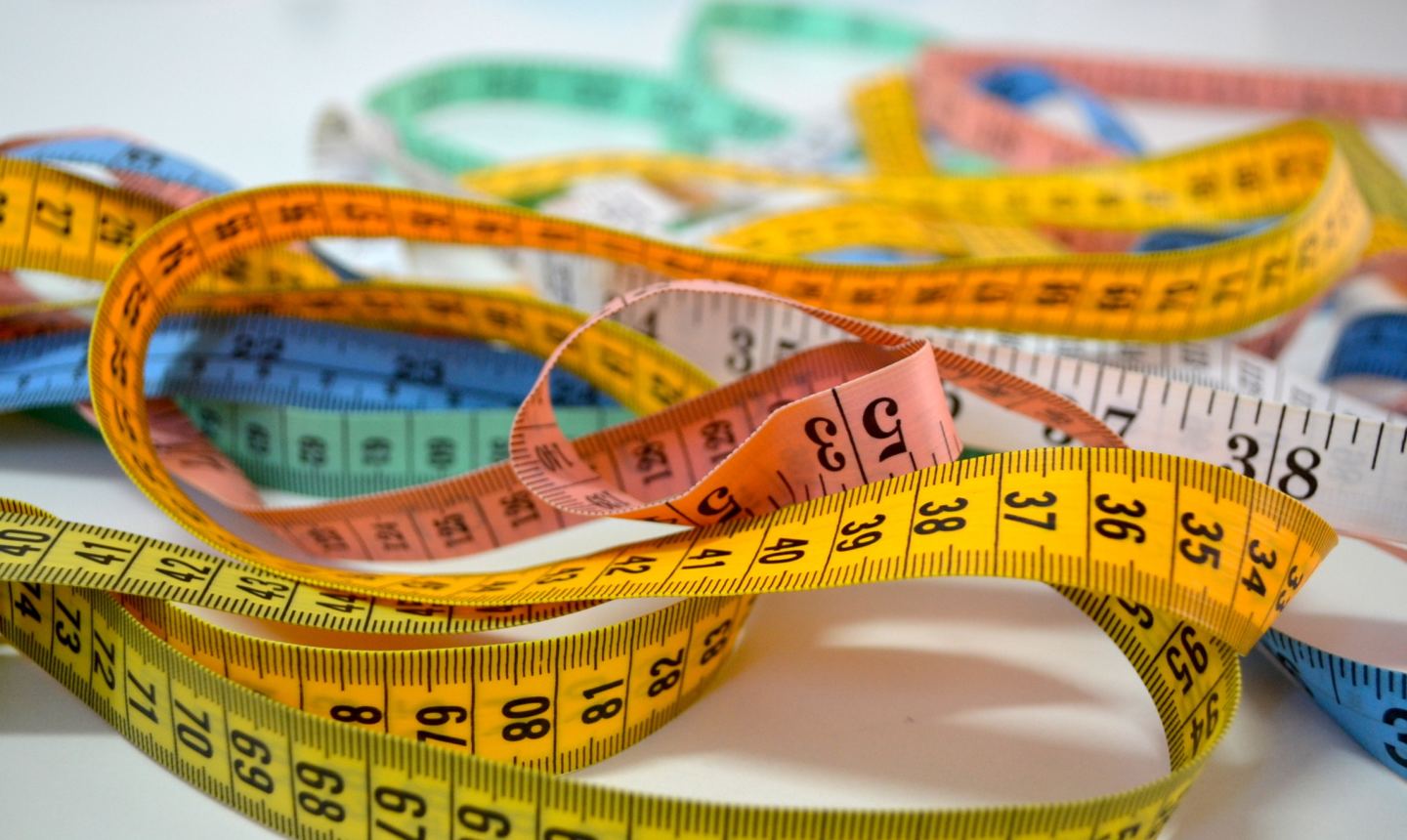
Patricia Serna/Unsplash
When it comes to pants, fit is everything. Even getting it slightly off can make the difference between a pair you wear all the time and one that lives in the drawer, causing a pang of regret every time you glance at it.
The key to crushing it? Taking careful and accurate measurements of your lower half before cutting that first pattern piece. But don't worry, it won't take a ton of time: Once you understand exactly how and where to measure, you'll be able to move through it pretty quickly — and you'll only have to do it once. Huzzah!
A Few Tips Before You Start
- Take measurements while only wearing underwear, a bodysuit, or other close-fitting clothing.
- Always hold your tape measure level across your body; tilting it up or down will throw your numbers off.
- Don't pull the tape measure too tight, or leave any slack — this will help get accurate numbers.
- You can take your own measurements, but you'll get the most accurate numbers if you're standing naturally with your arms down, looking straight ahead. So recruit a helper, if you can!
10 Key Pants Measurements

1. Waist
Your natural waist is the smallest point around your middle. Not sure where it is? Bend to the side — the crease that forms is your natural waistline. You could also wrap a piece of elastic around your waist, letting it rest at the spot that feels comfortable. Wear it for a bit to ensure that it feels natural, and if it does, use that point for your measurement.
Pro tip: Your natural waist measurement isn't necessarily where you'll wear your pants. If you want them to sit above or below your natural waist, take that measurement too, so you can compare it to the pattern later. (From here on in, when we refer to "the waist," we're referring to the place where you plan to wear your pants. Which, again, may or may not be your natural waist.)
2. High Hip
The high hip is the point around your upper butt and across the fullest point of your lower belly (it will likely cross your belly button). After jotting that number down, measure the distance from the waist to the high hip to compare to the pants pattern later.
3. Full Hip
The full hip is just above your crotch and below your belly button. As with the high hip, also measure from the waist to this point for later reference.
4. Upper Thigh
Measure the circumference around your thigh, just below your crotch.
5. Thigh
Also measure the circumference of your thigh at the midpoint, between your crotch and knee. This, along with the upper thigh measurement, will help you make sure your pants fit well through the thigh, as you may find you need to blend between sizes.
6. Calf
Measure your calf around its fullest point. Don't underestimate the importance of this step; calf sizes can vary dramatically, even among two people who wear the same pant size (not to mention one calf could be bigger than the other). Just as with the thigh, you can use this info later to blend between bigger or smaller sizes if necessary.
7. Ankle
If your pants are designed to be fitted at the ankle, this is a pretty important number. Measure at the point where you want the pants to hit.
8. Length
To measure pant length, you need to take note of a couple places. First, measure the distance down the side of your body, from the waist to where you want the pants to end when hemmed. Then, measure from the crotch to that same spot. Finally, put on the shoes you plan to wear with the pants and see if the length you've selected still works. If not, adjust accordingly.
9. Crotch Length
Start with the tape measure at the waist, bring it down under your crotch, up around the curve of your butt and back up to the waist in back. It's key to include any curves of the belly and butt into this measurement; otherwise, your pants will feel too snug.
10. Crotch Depth
This is the distance from the waist to the crotch. Again, be true to your curves to make sure it fits correctly.
How Your Pattern Measures Up
Now that you have all of these critical numbers, it's time to compare your body to your pants pattern to make sure everything's in sync.
Waist and Hip
For spots that go around the body, like the waist and hip, you can measure across the pattern. Be sure to subtract any seam allowances, then compare it to your body measurements.
Legs
To compare your thigh, calf and ankle circumference to the pattern's, measure your pattern at those same three points. Subtract seam allowances, then see if you need to blend sizes. On basic pants, you can do this by smoothing out from one pattern size to the next. Ideally, you do not want to blend more than two to three sizes.
Crotch
To measure the crotch, turn the tape measure on its side and lay it on the crotch curve of the pattern, then take out seam allowances. Compare this to your body measurement to see if you need to raise or lower the crotch curve or waist to fit your body.
Length
Measure all the same pant length points that you took on your body, then shorten or lengthen the pattern as needed.
Phew! All the measuring and math is done. Now, sew up a muslin and see how you did!

Share tips, start a discussion or ask other students a question. If you have a question for an expert, please click here.
Already a member?
No Responses to “This Is Exactly How to Nail the Fit of Your Next Pair of Pants”